S. F. Sun9780471281382, 0-471-28138-7
Table of contents :
Cover Page……Page 1
Title Page……Page 3
ISBN 0471281387……Page 4
2 Syntheses of Macromolecular Compounds……Page 5
4 Macromolecular Thermodynamics……Page 6
6 Liquid Crystals……Page 7
9 Osmotic Pressure……Page 8
11 Sedimentation……Page 9
14 Light Scattering……Page 10
16 Small-Angle X-Ray Scattering, Neutron Scattering, and Laser Light Scattering……Page 11
18 Protein Molecules……Page 12
19 Nuclear Magnetic Resonance……Page 13
Subject Index……Page 14
1.1 COLLOIDS……Page 24
1.2 MACROMOLECULES……Page 26
1.2.1 Synthetic Polymers……Page 27
1.2.2 Biological Polymers……Page 30
REFERENCES……Page 40
2.1 RADICAL POLYMERIZATION……Page 42
2.1.1 Complications……Page 44
2.1.3 Some Well-Known Overall Reactions of Addition Polymersy……Page 46
2.2.1 Anionic Polymerization……Page 48
2.2.3 Living Polymers……Page 50
2.3 COORDINATION POLYMERIZATION……Page 53
2.4 STEPWISE POLYMERIZATION……Page 55
2.5 KINETICS OF THE SYNTHESES OF POLYMERS……Page 56
2.5.1 Condensation Reactions……Page 57
2.5.2 Chain Reactions……Page 58
2.6 POLYPEPTIDE SYNTHESIS……Page 63
2.6.1 Synthesis of Insulin……Page 66
2.7 DNA SYNTHESIS……Page 71
PROBLEMS……Page 73
3 DISTRIBUTION OF MOLECULAR WEIGHT……Page 75
3.1.1 Binomial Distribution……Page 76
3.1.2 Poisson Distribution……Page 77
3.1.3 Gaussian Distribution……Page 78
3.2 ONE-PARAMETER EQUATION……Page 79
3.2.1 Condensation Polymers……Page 80
3.2.2 Addition Polymers……Page 81
3.3.1 Normal Distribution……Page 82
3.3.2 Logarithm Normal Distribution……Page 83
3.4 TYPES OF MOLECULAR WEIGHT……Page 84
3.5 EXPERIMENTAL METHODS FOR DETERMINING MOLECULAR WEIGHT AND MOLECULAR WEIGHT DISTRIBUTION……Page 87
PROBLEMS……Page 88
4 MACROMOLECULAR THERMODYNAMICS……Page 90
4.1 REVIEW OF THERMODYNAMICS……Page 91
4.2 DS OF MIXING: FLORY THEORY……Page 94
4.3 DH OF MIXING……Page 98
4.3.1 Cohesive Energy Density……Page 99
4.3.2 Contact Energy (First-Neighbor Interaction or Energy Due to Contact)……Page 102
4.5 PARTIAL MOLAR QUANTITIES……Page 104
4.5.1 Partial Specific Volume……Page 105
4.5.2 Chemical Potential……Page 106
4.6 THERMODYNAMICS OF DILUTE POLYMER SOLUTIONS……Page 107
4.6.1 Vapor Pressure……Page 110
4.6.2 Phase Equilibrium……Page 112
APPENDIX: THERMODYNAMICS AND CRITICAL PHENOMENA……Page 114
REFERENCES……Page 115
PROBLEMS……Page 116
5 CHAIN CONFIGURATIONS……Page 119
5.1 PRELIMINARY DESCRIPTIONS OF A POLYMER CHAIN……Page 120
5.2 RANDOM WALK AND THE MARKOV PROCESS……Page 121
5.2.1 Random Walk……Page 122
5.2.2 Markov Chain……Page 124
5.3 RANDOM-FLIGHT CHAINS……Page 126
5.4 WORMLIKE CHAINS……Page 128
5.5 FLORY’S MEAN-FIELD THEORY……Page 129
5.6 PERTURBATION THEORY……Page 130
5.6.2 Cluster Expansion Method……Page 131
5.7.1 Concentration Effect……Page 132
5.7.2 Temperature Effect……Page 137
5.7.3 Tube Theory (Reptation Theory)……Page 139
5.7.4 Images of Individual Polymer Chains……Page 141
5.8 SCALING AND UNIVERSALITY……Page 142
APPENDIX A SCALING CONCEPTS……Page 143
APPENDIX B CORRELATION FUNCTION……Page 144
REFERENCES……Page 146
PROBLEMS……Page 147
6 LIQUID CRYSTALS……Page 150
6.1 MESOGENS……Page 151
6.2 POLYMERIC LIQUID CRYSTALS……Page 153
6.2.1 Low-Molecular-Weight Liquid Crystals……Page 154
6.2.3 Side-Chain Liquid-Crystalline Polymers……Page 155
6.3 SHAPES OF MESOGENS……Page 156
6.4.1 Mesophases in General……Page 157
6.4.3 Smectic Phase……Page 158
6.4.4 Compounds Representing Some Mesophases……Page 159
6.4.5 Shape and Phase……Page 160
6.5 THERMOTROPIC AND LYOTROPIC LIQUID CRYSTALS……Page 161
6.6 KERR EFFECT……Page 163
6.7.1 Rigid-Rod Model……Page 164
6.7.2 Lattice Model……Page 165
6.7.3 De Genne’s Fluctuation Theory……Page 167
6.8 CURRENT INDUSTRIAL APPLICATIONS OF LIQUID CRYSTALS……Page 168
6.8.1 Liquid-Crystal Displays……Page 169
6.8.2 Electronic Devices……Page 170
REFERENCES……Page 172
7.1 RUBBER AND RUBBERLIKE MATERIALS……Page 173
7.2 NETWORK STRUCTURE……Page 174
7.3 NATURAL RUBBER AND SYNTHETIC RUBBER……Page 175
7.4 THERMODYNAMICS OF RUBBER……Page 177
7.5 STATISTICAL THEORY OF RUBBER ELASTICITY……Page 181
7.6 GELS……Page 185
REFERENCES……Page 186
PROBLEMS……Page 187
8.1 VISCOSITY……Page 188
8.1.1 Capillary Viscometers……Page 189
8.1.2 Intrinsic Viscosity……Page 193
8.1.3 Treatment of Intrinsic Viscosity Data……Page 195
8.1.5 Theories in Relation to Intrinsic Viscosity of Flexible Chains……Page 199
8.1.6 Chain Entanglement……Page 202
8.1.7 Biological Polymers (Rigid Polymers, Inflexible Chains)……Page 204
8.2 VISCOELASTICITY……Page 207
8.2.1 Rouse Theory……Page 210
8.2.2 Zimm Theory……Page 213
REFERENCES……Page 215
PROBLEMS……Page 216
9 OSMOTIC PRESSURE……Page 221
9.2 DETERMINATION OF MOLECULAR WEIGHT AND SECOND VIRIAL COEFFICIENT……Page 222
9.3 THEORIES OF OSMOTIC PRESSURE AND OSMOTIC SECOND VIRIAL COEFFICIENT……Page 225
9.3.1 McMillan–Mayer Theory……Page 226
9.3.2 Flory Theory……Page 227
9.3.3 Flory–Krigbaum Theory……Page 228
9.3.4 Kurata–Yamakawa Theory……Page 230
9.3.5 des Cloizeaux–de Gennes Scaling Theory……Page 232
9.3.6 Scatchard’s Equation for Macro Ions……Page 236
APPENDIX B PARTITION FUNCTIONS……Page 238
APPENDIX C MEAN-FIELD THEORY AND RENORMALIZATION GROUP THEORY……Page 239
APPENDIX E GREEN’S FUNCTION……Page 240
PROBLEMS……Page 241
10.1.1 Fick’s First and Second Laws……Page 246
10.1.2 Solution to Continuity Equation……Page 247
10.2 PHYSICAL INTERPRETATION OF DIFFUSION: EINSTEIN’S EQUATION OF DIFFUSION……Page 249
10.3.1 Size……Page 252
10.3.2 Shape……Page 253
10.4 CONCENTRATION DEPENDENCE OF DIFFUSION COEFFICIENT……Page 254
10.5 SCALING RELATION FOR TRANSLATIONAL DIFFUSION COEFFICIENT……Page 256
10.6.1 Measurement Based on Fick’s First Law……Page 257
10.6.2 Measurement Based on Fick’s Second Law……Page 258
10.7 ROTATIONAL DIFFUSION……Page 260
10.7.2 Fluorescence Depolarization……Page 262
PROBLEMS……Page 263
11 SEDIMENTATION……Page 266
11.1 APPARATUS……Page 267
11.2.1 Measurement of Sedimentation Coefficients: Moving-Boundary Methods……Page 269
11.2.3 Application of Sedimentation Coefficient……Page 272
11.3 SEDIMENTATION EQUILIBRIUM……Page 273
11.3.1 Archibald Method……Page 274
11.3.2 Van Holde–Baldwin (Low-Speed) Method (Rotor Velocity 10,000–14,000 rpm)……Page 277
11.3.3 Yphantis (High-Speed) Method (Rotor Velocity 28,000–32,000 rpm)……Page 279
11.3.4 Absorption System……Page 281
11.4 DENSITY GRADIENT SEDIMENTATION EQUILIBRIUM……Page 282
11.5 SCALING THEORY……Page 283
REFERENCES……Page 285
PROBLEMS……Page 286
12.2 OPTICAL ROTATORY DISPERSION……Page 290
12.3 CIRCULAR DICHROISM……Page 295
12.4 COTTON EFFECT……Page 298
12.5 CORRELATION BETWEEN ORD AND CD……Page 300
12.6 COMPARISON OF ORD AND CD……Page 303
PROBLEMS……Page 304
13.1.1 Chromatographic Terms and Parameters……Page 307
13.1.2 Theory of Chromatography……Page 312
13.1.3 Types of HPLC……Page 314
13.2.1 Basic Theory……Page 323
13.2.2 General Techniques of Modern Electrophoresis……Page 328
13.2.3 Agarose Gel Electrophoresis and Polyacrylamide Gel Electrophoresis……Page 330
13.2.4 Southern Blot, Northern Blot, and Western Blot……Page 332
13.2.6 Isoelectric Focusing and Isotachophoresis……Page 333
13.3 FIELD-FLOW FRACTIONATION……Page 337
REFERENCES……Page 340
PROBLEMS……Page 341
14.1 RAYLEIGH SCATTERING……Page 343
14.2 FLUCTUATION THEORY (DEBYE)……Page 347
14.3.2 Multicomponent Systems……Page 352
14.3.3 Copolymers……Page 354
14.4 INTERNAL INTERFERENCE……Page 356
14.5 DETERMINATION OF MOLECULAR WEIGHT AND RADIUS OF GYRATION BY THE ZIMM PLOT……Page 360
APPENDIX EXPERIMENTAL TECHNIQUES OF THE ZIMM PLOT……Page 364
REFERENCES……Page 368
PROBLEMS……Page 369
15.1 PRELIMINARIES……Page 371
15.2.1 Basic Fourier Series……Page 373
15.2.3 Fourier Cosine Series……Page 375
15.2.5 Other Forms of Fourier Series……Page 376
15.4 FOURIER INTEGRALS……Page 377
15.5.1 Fourier Transform Pairs……Page 379
15.6.1 Definition……Page 382
15.6.3 Convolution and Fourier Theory: Power Theorem……Page 384
15.7.1 Lorentz Line Shape……Page 385
15.7.2 Correlation Function……Page 386
15.8.1 Discrete and Inverse Discrete Fourier Transform……Page 387
15.8.2 Application of DFT……Page 388
15.8.3 Fast Fourier Transform……Page 389
APPENDIX……Page 390
REFERENCES……Page 391
PROBLEMS……Page 392
16.1 SMALL-ANGLE X-RAY SCATTERING……Page 394
16.1.1 Apparatus……Page 395
16.1.2 Guinier Plot……Page 396
16.1.3 Correlation Function……Page 398
16.1.4 On Size and Shape of Proteins……Page 400
16.2.1 Six Types of Neutron Scattering……Page 404
16.2.2 Theory……Page 405
16.2.3 Dynamics of a Polymer Solution……Page 406
16.2.5 Comparison of Small-Angle Neutron Scattering with Light Scattering……Page 407
16.2.6 Contrast Factor……Page 409
16.2.8 Neutron Spectroscopy……Page 411
16.3.1 Laser Light-Scattering Experiment……Page 412
16.3.2 Autocorrelation and Power Spectrum……Page 413
16.3.3 Measurement of Diffusion Coefficient in General……Page 414
16.3.4 Application to Study of Polymers in Semidilute Solutions……Page 416
REFERENCES……Page 418
PROBLEMS……Page 419
17 ELECTRONIC AND INFRARED SPECTROSCOPY……Page 422
17.1 ULTRAVIOLET (AND VISIBLE) ABSORPTION SPECTRA……Page 423
17.1.1 Lambert–Beer Law……Page 425
17.1.2 Terminology……Page 426
17.1.3 Synthetic Polymers……Page 428
17.1.4 Proteins……Page 429
17.1.5 Nucleic Acids……Page 432
17.2.1 Fluorescence Phenomena……Page 435
17.2.3 Quenching……Page 436
17.2.4 Energy Transfer……Page 439
17.2.5 Polarization and Depolarization……Page 441
17.3.1 Basic Theory……Page 443
17.3.2 Absorption Bands: Stretching and Bending……Page 444
17.3.3 Infrared Spectroscopy of Synthetic Polymers……Page 447
17.3.4 Biological Polymers……Page 450
17.3.5 Fourier Transform Infrared Spectroscopy……Page 451
REFERENCES……Page 453
PROBLEMS……Page 455
18.1.1 Sequence……Page 459
18.1.2 Secondary Structure……Page 460
18.2.1 Representation Symbols……Page 464
18.2.2 Representations of Whole Molecule……Page 465
18.3 PROTEIN FOLDING AND REFOLDING……Page 467
18.3.1 Computer Simulation……Page 468
18.3.3 De Novo Prediction……Page 470
18.4.1 Biological Factor: Chaperones……Page 471
18.4.2 Chemical Factor: Intra- and Intermolecular Interactions……Page 472
18.4.3 Brain Diseases……Page 473
18.5 GENOMICS, PROTEOMICS, AND BIOINFORMATICS……Page 474
18.6 RIBOSOMES: SITE AND FUNCTION OF PROTEIN SYNTHESIS……Page 475
REFERENCES……Page 477
19.1.1 Magnetic Field and Magnetic Moment……Page 478
19.1.2 Magnetic Properties of Nuclei……Page 479
19.1.3 Resonance……Page 481
19.1.4 Nuclear Magnetic Resonance……Page 483
19.2 CHEMICAL SHIFT (d) AND SPIN–SPIN COUPLING CONSTANT (J)……Page 484
19.3 RELAXATION PROCESSES……Page 489
19.3.1 Spin–Lattice Relaxation and Spin–Spin Relaxation……Page 490
19.3.2 Nuclear Quadrupole Relaxation and Overhauser Effect……Page 492
19.4 NMR SPECTROSCOPY……Page 493
19.4.1 Pulsed Fourier Transform Method……Page 494
19.4.2 One-Dimensional NMR……Page 495
19.4.3 Two-Dimensional NMR……Page 496
19.5 MAGNETIC RESONANCE IMAGING……Page 498
19.6.1 Poly(methyl methacrylate)……Page 500
19.6.2 Polypropylene……Page 504
19.6.3 Deuterium NMR Spectra of Chain Mobility in Polyethylene……Page 505
19.6.4 Two-Dimensional NMR Spectra of Poly-c-benzyl-L-glutamate……Page 508
19.7.2 Techniques……Page 510
19.8 TWO EXAMPLES OF PROTEIN NMR……Page 514
19.8.1 Membrane Protein……Page 516
REFERENCES……Page 517
PROBLEMS……Page 518
20.1 X-RAY DIFFRACTION……Page 520
20.2.1 Miller Indices, hkl……Page 521
20.2.2 Unit Cells or Crystal Systems……Page 525
20.2.3 Crystal Drawing……Page 526
20.3 SYMMETRY IN CRYSTALS……Page 527
20.3.1 Bravais Lattices……Page 528
20.3.2 Point Group and Space Group……Page 529
20.4.2 Structure Factor……Page 538
20.4.3 Fourier Synthesis of Electron Density……Page 539
20.5.1 Patterson Synthesis……Page 540
20.5.2 Direct Method (Karle–Hauptmann Approach)……Page 541
20.6 REFINEMENT……Page 542
20.7.1 Synthetic Polymers……Page 543
20.7.3 DNA……Page 546
20.8.1 X-Ray Sources……Page 548
20.8.3 Structure of Proteins……Page 549
20.8.4 Protein Examples……Page 551
APPENDIX NEUTRON DIFFRACTION……Page 553
REFERENCES……Page 555
PROBLEMS……Page 556
AUTHOR INDEX……Page 558
SUBJECT INDEX……Page 566
FIGURE 18.6……Page 573
FIGURE 18.9……Page 574
FIGURE 18.10……Page 575
FIGURE 18.14 Pro……Page 576
FIGURE 19.18……Page 577
FIGURE 19.19……Page 578
FIGURE 20.21……Page 579
FIGURE 20.22B……Page 580
Back Page……Page 581

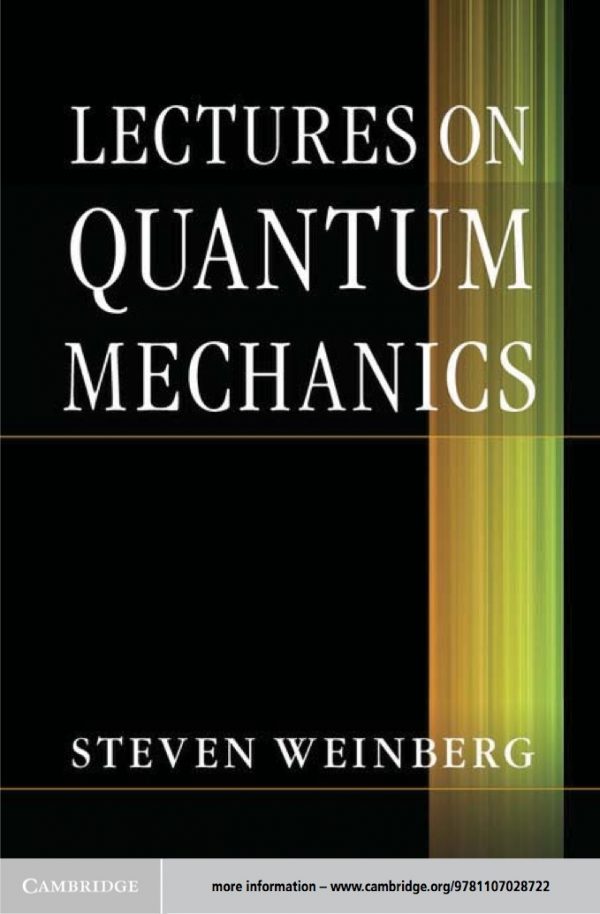
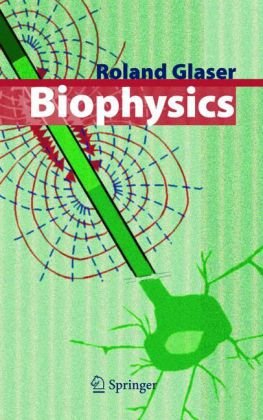
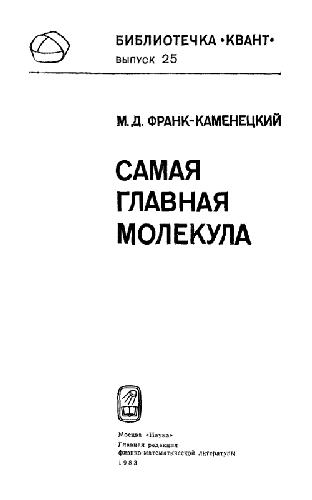
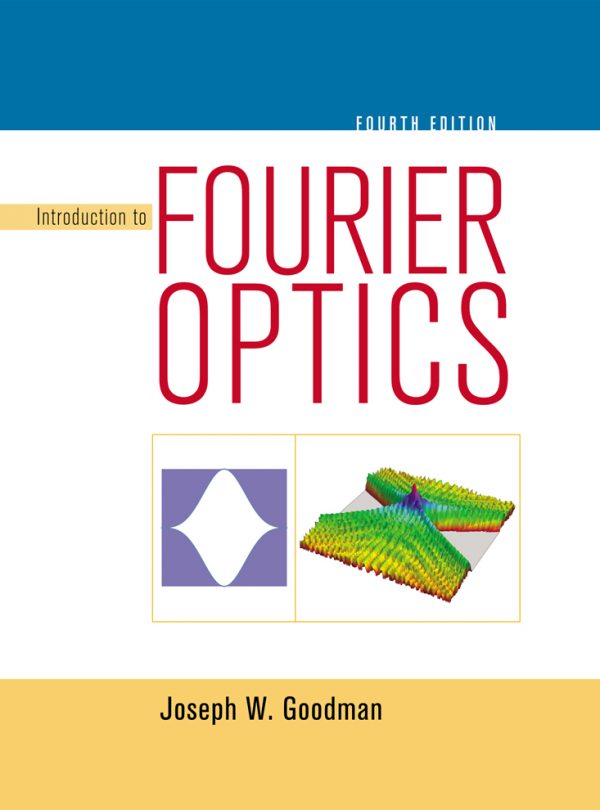
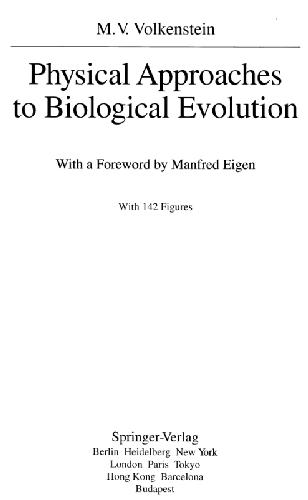

Reviews
There are no reviews yet.